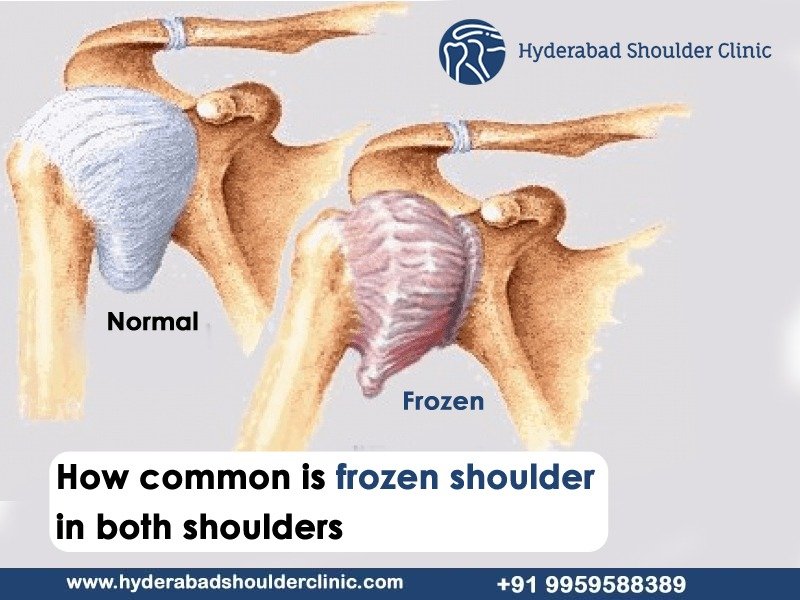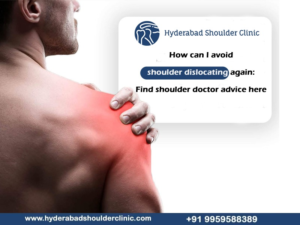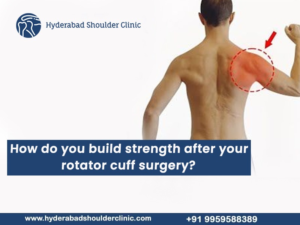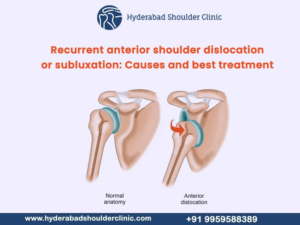The shoulder is one of the most crucial joints of the body, and it allows for a wide range of movements. The shoulder joint mainly pivots on a ball-and-socket arrangement called the glenohumeral joint, which joins the top of the humerus (upper arm bone) to a scooped-out part of the scapula (shoulder blade) called the glenoid cavity.
The glenohumeral joint enables various arm rotations. However, the joint is protected by a lubricant called synovial fluid while moving. The rotator cuff is a band of muscles and tendons stabilising the shoulder and controlling its movements. As one can observe, the shoulder is an elaborate architecture of soft tissues, which makes it vulnerable to trauma as well as chronic wear and tear.
The head of the humerus moves smoothly in the glenoid cavity (scapula). However, a frozen shoulder means the capsule which protects the glenohumeral joint, contracts and stiffens.
A patient with a frozen shoulder can identify it based on symptoms such as shoulder stiffness, pain, and inability to move the hand in all directions. Frozen shoulder develops in stages and may take six months to 2 years. With time, some patients observe reduced pain, but the stiffness continues, and the range of motion remains limited.
How common is frozen shoulder in both shoulders?
Adhesive capsulitis or frozen shoulder is seen mainly in the non-dominant extremity, but it can occur in both shoulders in up to 40% to 50% of cases! Medically, this condition is called Bilateral frozen shoulder. Most patients are unaware that it can occur on both sides, and most health practitioners also might be unaware.
According to the research, around 14% of patients can simultaneously develop frozen shoulders in both arms. A person starts with a frozen shoulder in one arm and then, a few months or years later, develops it in the other shoulder. Either way, once you have a frozen shoulder on one side, the chance of developing in another arm is not welcome.
What causes Bilateral Frozen Shoulder Causes or frozen shoulder in both shoulders?
- Frozen shoulder is more common in diabetics and hypothyroidism patients. Even bilateral frozen shoulder is also common in these patients.
- The other applicable causes of frozen shoulder syndrome, such as injury, fall, or age-related issues, still contribute to bilateral frozen shoulder.
- A person with a frozen shoulder generally uses the pain-free arm more and more. Overusing the good arm will cause fatigue and strain, resulting in tightness or stiffness. The excellent arm muscles become overstimulated due to too many signals from the nervous system.
- Bilateral frozen shoulders could also be due to a pinch in the nerve of the neck where it branches off from the spinal cord. That point could be compressed by the surrounding bones, muscles, or other tissues. Such a pinch could be due to a traumatic injury, such as from sports or an automobile accident. Normal age-related wear and tear is also a reason.
Is frozen shoulder on both shoulders curable?
Yes!!!. Even without surgery, frozen shoulders generally get better over time. However, for it to completely recover, it may take up to 3 years. We at Hyderabad Shoulder Clinics focus on the Treatment to control pain and restore motion and strength through physical therapy.
Nonsurgical Treatment of frozen shoulders on both sides
Curing underlying medical conditions: One may not know this, but it is essential that the underlying health conditions, such as diabetes and HbA1C levels, be kept in control. The frozen shoulder treatment shows promising results if one can control diabetes.
Non-steroidal anti-inflammatory drugs (NSAIDs): Pain medications such as aspirin and ibuprofen reduce pain and swelling.
Steroid injections: If the patient does not show any improvement in the pain, then cortisone is a potent anti-inflammatory medicine injected directly into the shoulder joint.
Physical therapy: Below are the specific exercises that will help restore motion.
Start by warming up, which means taking a warm shower or bath for 10 to 15 minutes. Alternate methods are applying a moist heating pad or a damp towel heated in the microwave on the shoulder.
The stopping point of all these exercises is stretching to the end of tension but not feeling the pain.
Pendulum stretch
- Relax your shoulders and lean slightly, allowing the frozen arm to hang down.
- Swing the arm in a small one-foot diameter circle.
- Repeat such ten revolutions in each direction once a day.
Towel stretch
- Grab a three-foot-long towel by placing both hands behind your back horizontally.
- With the help of one arm, pull the other arm upward to stretch it.
- You can also do this exercise with the towel draped over your suitable shoulder.
- Repeat this stretch 10 to 20 times a day.
Finger walk
- Face a wall and reach out and touch the wall at waist level with the fingertips of the affected arm.
- Bend the elbows slightly, and slowly walk your fingers up the wall, spider-like.
- Slowly lower the arm and repeat 10 to 20 times a day.
Cross-body reach
- Use one of your arms to lift your affected arm at the elbow and bring it up and across your body.
- With gentle pressure, stretch the shoulder and hold the stretch for 15 to 20 seconds.
- Repeat 10 to 20 times per day.
We at Hyderabad Shoulder Clinics personally coach you on all the exercises and monitor your progress.
Surgical Treatment of frozen shoulders on both sides
Hydrodilatation: If the above treatments do not reduce the symptoms, your doctor may recommend hydrodilatation. This minor procedure injects large volumes of sterile fluid into the shoulder joints. The fluid expands the shoulder joint capsule and stretches it. Hydrodilatation is done by orthopaedic surgeons using imaging to guide fluid placement.
Shoulder arthroscopy: In a shoulder arthroscopy, the surgeon will cut through tight portions of the joint capsule. Small pencil-sized instruments are inserted through small incisions around your shoulder. The manipulation and arthroscopy are combined to obtain maximum results, and patients have good outcomes with these procedures.
Post-surgery, physical therapy is necessary to maintain the motion. Recovery times range from 6 weeks to 3 months. Remember that this is a slow process, and your commitment to therapy is critical in returning to all the activities you enjoy.
Long-term outcomes after surgery are generally good, and very little pain remains with an improved range of motion. However, for some, even after several years, the motion does not return ultimately, and some stiffness remains. Diabetic patients mostly retain some shoulder stiffness after surgery. Although uncommon, frozen shoulder can recur (come back), especially if a contributing factor like diabetes is still present.
We at Hyderabad Shoulder Clinics have handled numerous cases of frozen shoulders on both sides—our entire team and Dr.Chandra Sekhar. B will take total end-to-end care of your bilateral frozen shoulders.
For more information, please visit our website https://hyderabadshoulderclinic.com/ or contact us at +91 9959588389 or shoulderandsportsclinic@gmail.com.





